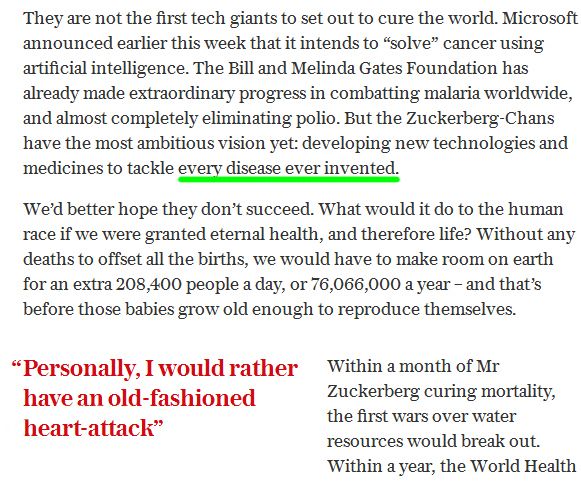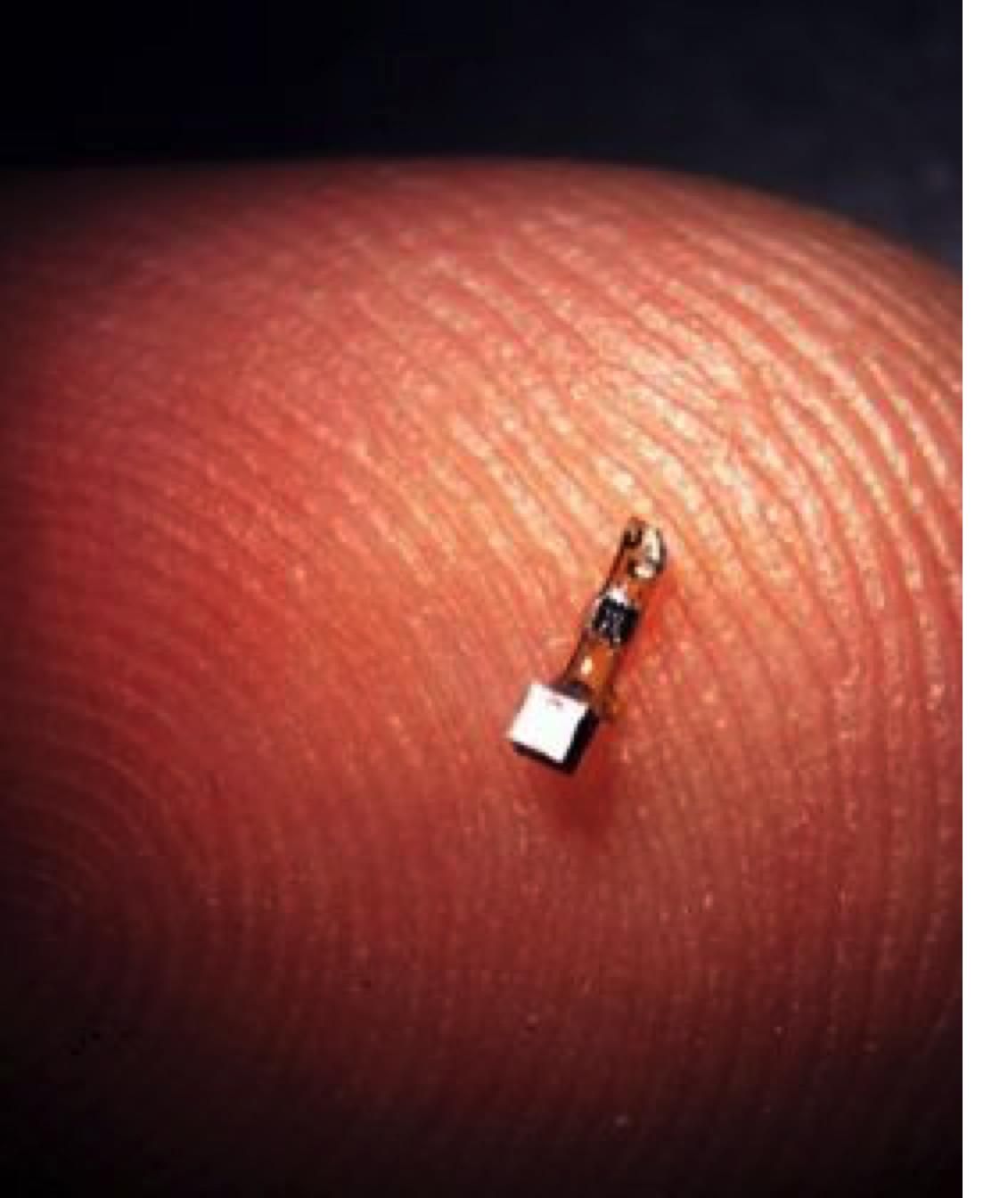You can make your own medical device or pay full price for the patented product.
Category: health – Page 475

Mobile breath analyzer checks oral hygiene on the go
These days there are a quite a few high-tech ways to keep our oral hygiene in check, from toothbrushes that track your technique to smart floss dispensers that encourage healthy habits. Mint is the latest connected solution to hit bathrooms and beyond, and is said to detect signs of gum disease and poor oral hygiene on your breath in the space of a few seconds.
Developed by Breathometer, the same company behind the smartphone-based breathalyzer we covered back in 2013, Mint is small handheld device that hooks up with iOS and Android smartphones to check in on the state of affairs inside your mouth. After a successful Indiegogo campaign in March 2015 and some good attention at the CES conference that same year, the device has finally started shipping today.
A sensor array inside the device measures the volatile sulfur compounds (VSCs) in your breath. Studies have shown these to be key culprits behind bad breath, but their presence might do more than send your significant other running in the other direction. They can also be indicative of gum disease and poor oral health.


MIT: Powering up graphene implants without frying cells ~ For the Next Generation of Implants
This computational illustration shows a graphene network structure below a layer of water.
New analysis finds way to safely conduct heat from graphene to biological tissues.
In the future, our health may be monitored and maintained by tiny sensors and drug dispensers, deployed within the body and made from graphene — one of the strongest, lightest materials in the world. Graphene is composed of a single sheet of carbon atoms, linked together like razor-thin chicken wire, and its properties may be tuned in countless ways, making it a versatile material for tiny, next-generation implants.

The science world is freaking out over this 25-year-old’s answer to antibiotic resistance
A 25-year-old student has just come up with a way to fight drug-resistant superbugs without antibiotics.
The new approach has so far only been tested in the lab and on mice, but it could offer a potential solution to antibiotic resistance, which is now getting so bad that the United Nations recently declared it a “fundamental threat” to global health.
Antibiotic-resistant bacteria already kill around 700,000 people each year, but a recent study suggests that number could rise to around 10 million by 2050.

A sickeningly bad idea indeed
A strong rebuttle to the sick article in the Telegraph which attempts to discredit Zuckerberg and Chan and their commitment to curing diseases.
Science and progress hardly ever stop just because a few cuckoos think we’re going too far. That’s what I tell myself most of the times when I bump into depressingly ill-informed articles about ageing and the diseases of old age. I tell myself that the best thing to do is to just let such articles disappear into oblivion and not give them any extra visibility. However, if instead of a few cuckoos we’re faced with an army of cuckoos, then we’re in for troubles.
At the time of this writing, people who are in favour of or oppose rejuvenation aren’t many, and neither are those who know about it but don’t care. Quite likely, most people in the world haven’t even heard about it yet. What I fear is that, when the advent of rejuvenation biotechnologies will be close, people who oppose rejuvenation will do their best to persuade undecided ones that disease is better than health, and ultimately, provoke an us-vs-them conflict that could jeopardise the cause of rejuvenation. The best way to avoid that conflict is to convince as many people as possible to support rejuvenation biotechnologies before they even arrive, so that when they do, those who oppose them will only be a few cuckoos indeed and not an army. Exposing the intellectual misery of deathist arguments is indubitably a good way of reaching this goal; that’s why I chose to respond to this spectacularly stupid article, instead of just ignoring it.
Lewis doesn’t want to live in a world without diseases. She prefers living in one where diseases are invented.

How Science Can Inform Good Leadership — By Richard J. Davidson | Huffington Post
“As a neuroscientist who studies people of all ages and walks of life, I’ve gathered insights over the decades that can alleviate distraction, dissatisfaction and suffering, especially for people at work, including executives and leaders.”

Wireless at the Fringe – Of Human Intranets, Brain-Machine Interfaces and Enhanced Humans
Alan gatherer, editor in chief, comsoc technology news
After their article a couple of months ago, I asked the good folks at BWRC to expand on the work they are doing in implantable electronics, as well as its potential health implications. BWRC’s approach focuses not only on functionality but on battery-free, extreme miniaturization and wireless access for very specific quantification of the host health. They also point us toward a future where such devices might link up and literally talk about you behind (as well as under and inside) your back. Hope you enjoy, and comments as always are welcome.
Jan M. Rabaey and Rikky Muller, BWRC.

Bioquark Inc. Announces Commercial Cosmetology Relationship with Forest Organics LLC & I-Beauty Charm LLC
Bioquark, Inc., (http://www.bioquark.com) a life sciences company focused on the development of novel, natural bio-products for health, wellness and rejuvenation, has entered a collaboration whereby Forest Organics LLC & I-Beauty Charm LLC, a unique, integrated facial and body cosmetology facility, and their state-licensed, highly skilled skin care specialists, will be utilizing novel, natural Bioquantine™ extract complexes as part of their spa procedures, as well as providing consumer access to a range of proprietary skin care products (http://www.forestorganics.life).
“We are very excited about this first company collaboration in the area of beauty care and cosmetology,” said Ira S. Pastor, CEO, Bioquark Inc. “It is another step forward towards the wide applicability of our natural combinatorial bio-products, across a broad range of health and wellness segments, as well as future franchise opportunities.”
The integrated Forest Organics LLC & I-Beauty Charm LLC model was conceived by local Tampa business women, Nadia Goetzinger and Tatyana Reshetnikova, to offer a new generation of products and services related to skin beautification and rejuvenation.
“We look forward to working closely with Bioquark Inc. on this initiative and providing an exclusive range of services and products to customers throughout the greater Tampa metropolitan area,” said Ms. Goetzinger”

About Bioquark, Inc.
Bioquark Inc. is focused on the development of natural biologic based products, services, and technologies, with the goal of curing a wide range of diseases, as well as effecting complex regeneration. Bioquark is developing both biopharmaceutical candidates, as well as non-Rx products for the global consumer health and wellness market segments.
About Forest Organics LLC & I-Beauty Charm LLC
Forest Organics LLC & I-Beauty Charm LLC operate a unique, integrated facial and body cosmetology facility providing novel rejuvenative spa and cosmetology services and products.

Microsoft wants to crack the cancer code using artificial intelligence
Cancer is like a computer virus and can be ‘solved’ by cracking the code, according to Microsoft. The computer software company says its researchers are using artificial intelligence in a new healthcare initiative to target cancerous cells and eliminate the disease.
One of the projects within this new healthcare enterprise involves utilizing machine learning and natural language processing to help lead researchers sift through all the research data available and come up with a treatment plan for individual cancer patients.
IBM is working on something similar using a program called Watson Oncology, which analyzes patient health info against research data.